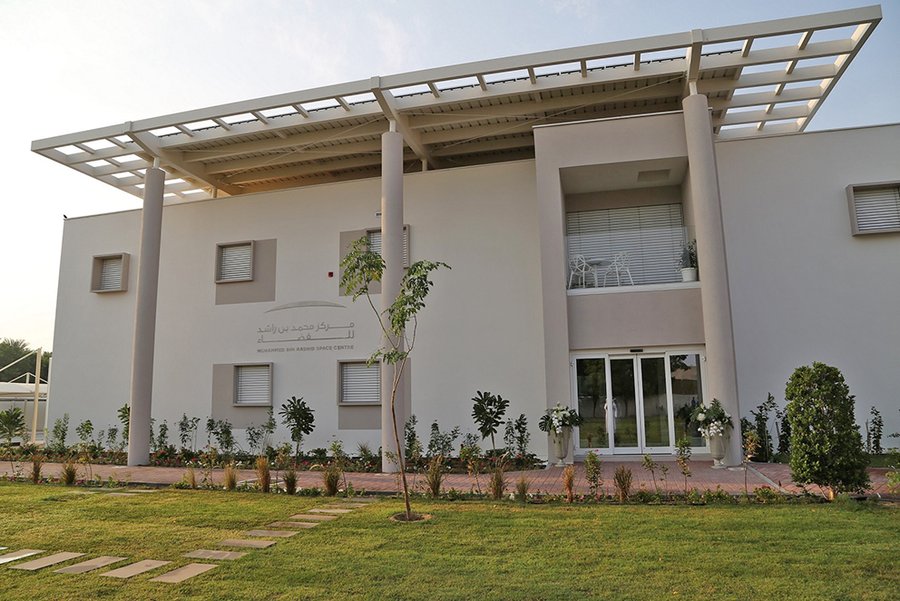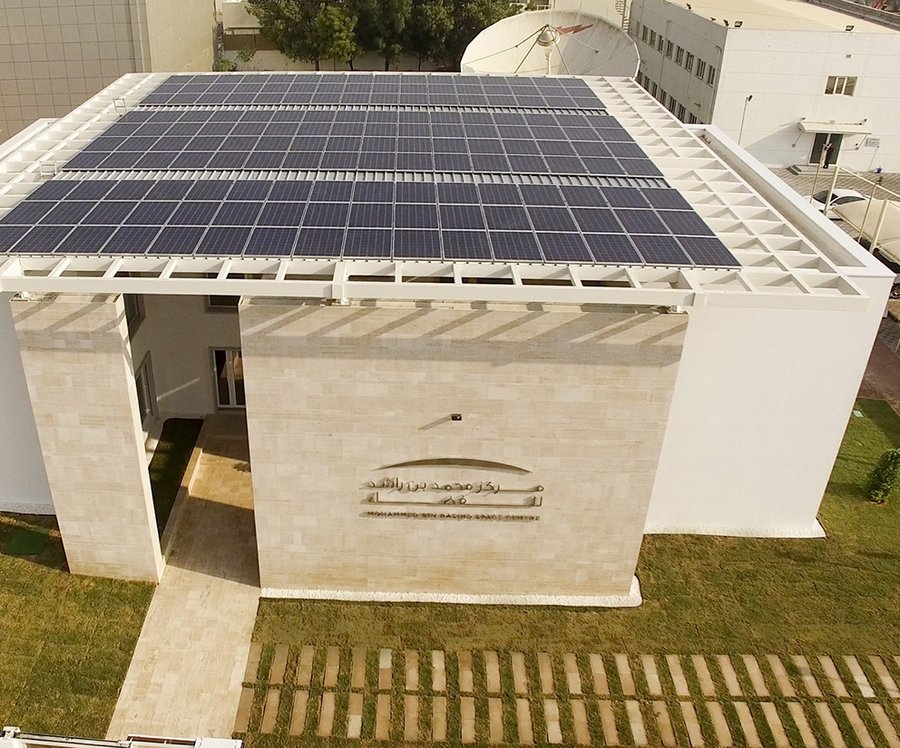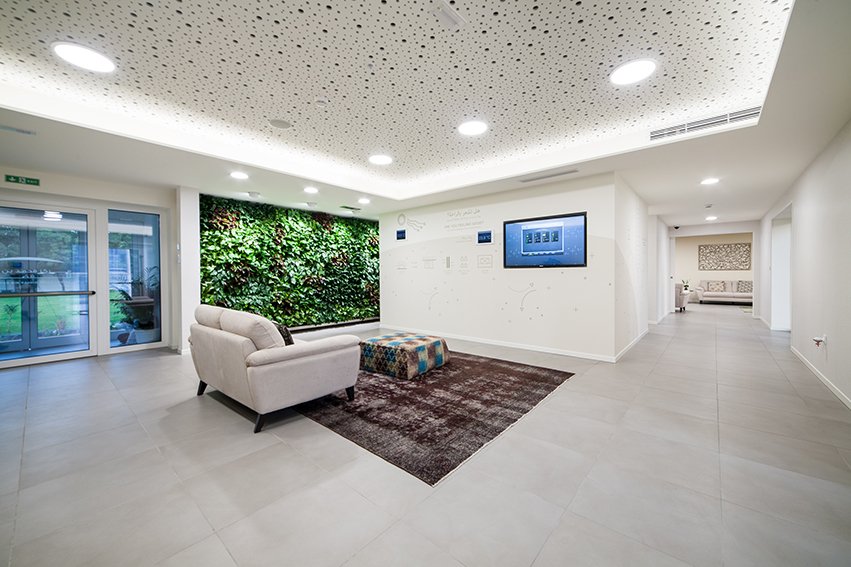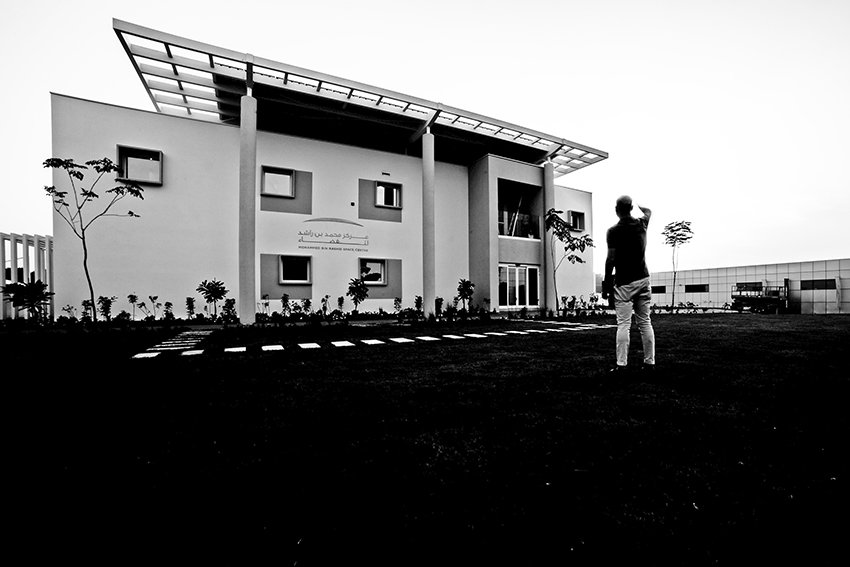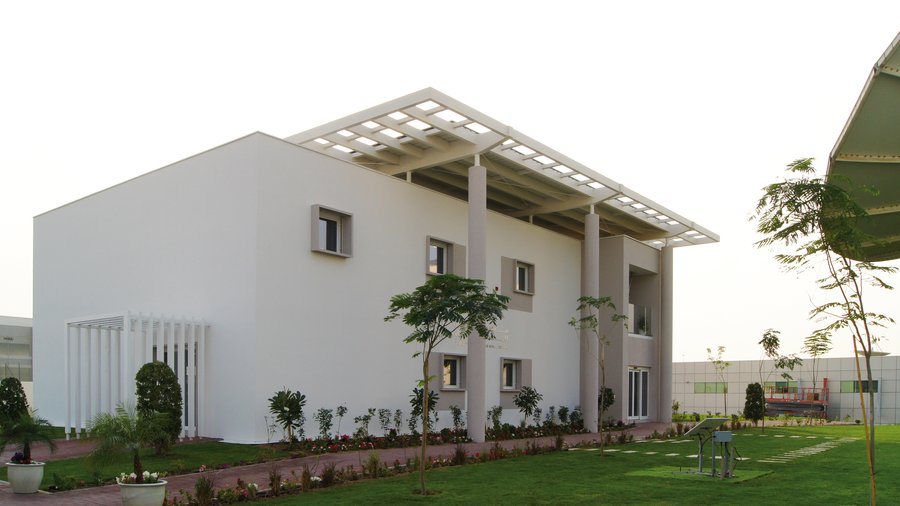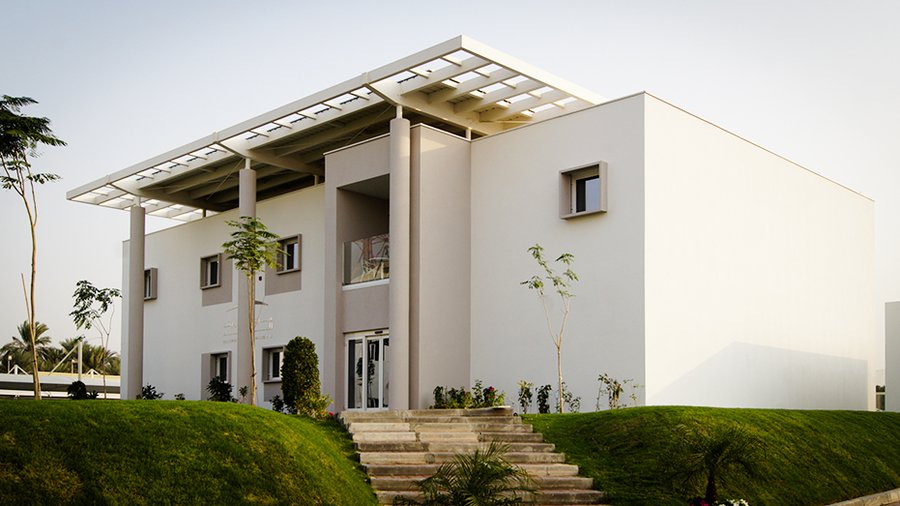Mohammed bin Rashid Space Centre (MBRSC) unveils new plans to its Sustainable Autonomous House developed for hot and humid climate
MBRSC is ready to provide support and guidance to government and private entities involved in the real estate sector to invest in these houses
Sustainable Autonomous House is certified by the Passive House Institute in Germany as the first of its kind Passive House for a hot and humid climate
Yousuf Al Shaibani, MBRSC Director General:
"MBRSC has introduced an integrated model of an essential component in smart cities and one of future accelerators”
“This house is an initiative aimed at effectuating the use of green and smart techniques to implement the UAE’s strategy for green development and Dubai Clean Energy Strategy”
“The Sustainable Autonomous House transforms the housing sector from energy consumer to energy source”
13th November 2016 / Dubai, United Arab Emirates
Within the framework of the Sustainable Autonomous House project inaugurated recently by His Highness Sheikh Mohammed bin Rashid Al Maktoum, Vice President of the UAE Prime Minister and Ruler of Dubai, MBRSC has unveiled the first of its kind sustainable autonomous house in the UAE, and has announced a series of plans to secure the technical requirements needed for building and developing these houses, with the aim of implementing the sustainable autonomous house model across the UAE.
MBRSC is planning to establish a laboratory specialized in conducting experiments and tests for sustainable autonomous houses to verify the efficiency of devices, systems and materials. A team of Emirati engineers at the Centre will be conducting complementary studies to optimize the condensed water in the cooling system, managing the humidity and high moisture processes in the atmosphere, in order to produce water for domestic use.”
The Centre declared that it is preparing study and research plans to link the project with Dubai’s electricity grid, providing it with surplus energy storage so that the sustainable autonomous house will become small power plants producing electricity from a natural source - solar energy.
The Sustainable Autonomous House is the first model house developed to be self-sufficient and completely independent of the electricity grid. It produces autonomous energy from the Sun and depends on smart technical and engineering solutions, while it is able to adapt to the hot and humid climate challenges. Certified by the Passive House Institute in Germany, the model is the first of its kind Passive House for hot and humid climate. The house meets energy consumption and sustainability criteria, as it was designed and constructed in accordance with standards and regulations that guarantee the efficient use of energy, meeting all environmental and comfortable living requirements.
H.E. Yousuf Hamad Al Shaibani, Director General of MBRSC, said: “Since the establishment of MBRSC, we have been adopting the knowledge transfer strategy in order to develop new technology on UAE soil. To fulfill that goal, we built a strategic partnership with one of the leading academic institutions specialised in developing research studies on efficient houses, such as the University of Bergamo and the Passive House Institute in Germany. This significant partnership aims to transfer knowledge of sustainable energy house building techniques. However, we have developed a new concept of this kind of smart home, to fit with the local environment in the UAE."
Al Shaibani confirmed that the Sustainable Autonomous House is one of MBRSC’s initiatives aimed at effectuating the use of the green and smart techniques to implement the UAE’s strategy for green development and Dubai Clean Energy Strategy. It also aims to provide an applicable model for one of the main requirements of the Dubai Smart City initiative.
Al Shaibani said: “The Sustainable Autonomous House initiative is more than just specialized scientific technical research. MBRSC is looking forward to constructing an integrated model of an essential component in smart cities, and this is one of future accelerators. It’s essential to create the culture of effective and sufficient optimization of renewable energy sources in order to maintain a sustainable environment.
“The global economy tends to invest a great deal into renewable energy projects. This smart home transforms the housing sector from energy consumer to an energy source, thereby reducing the central power production load on the national economy," he added.
Al Shaibani urged all governmental and private entities involved in the real estate sector to invest in this kind of smart building. He said: “MBRSC is ready to provide all support and guidance, as it is developing the current model of sustainable autonomous houses for a hot and humid climate. It is essential to establish the technical infrastructure that is necessary for developers, including a scientific laboratory specialised in conducting tests and experiments to verify the efficiency of devices, systems and materials used.
“We are planning to conduct studies to link the project with Dubai’s electricity grid, providing it with surplus energy storage, plus complementary studies to secure water sufficiency in these houses,” Al Shaibani concluded.
Dr Ali Shaheen, Director of the Sustainable Energy Program at MBRSC, said: "The technology used currently in the Sustainable Autonomous House within the Centre depends on condensing the generated moisture in the smart cooling systems and moisture management processes to produce approximately 200 litres of water per day. This is a useful amount for domestic use. In the next phase, we will study how to transform high humidity to a water source cost effectively, by applying special techniques suitable for the nature of low energy consumption.
Shaheen confirmed that: “The Sustainable Autonomous House requires a very short period to be built. Building the house model at MBRSC took only 100 days, preceded by more than a year of study, comparison and application. During this phase, the Emirati engineers at the Centre, in cooperation with our strategic partners, were committed to examining the house systems, devices, insulation and house management items, while testing their interaction to ensure efficient implementation and performance in the future.
“One of the requirements of the design stage is the orientation of the building which should fit with the sun path to ensure best performance. Also, the house have been designed and prepared to contain all the equipments and devices found in a traditional house. For example, the sustainable autonomous house at MBRSC is constructed to cover the planned future needs, and it is designed to accommodate over 30 people in a 6,000 sq ft area,” he added.
Shaheen highlighted the similarities and dissimilarities between traditional homes and the sustainable autonomous house: “The sustainable energy house requires the same foundation of a traditional one, on top of starts the insulation process.”
He pointed out that sustainable autonomous house temperature ranges from between 22°C and 25°C in all seasons and times, therefore it does not require any traditional cooling device, thus reducing energy consumption by 75% as a result of the smart technical and engineering solutions applied.
The smart technical solutions include a cooling technology based on chilled water, as well as thermal and air insulation techniques in both directions, as the fresh air spreads out across the house constantly via a mechanical ventilation system. Also, the house includes a smart management and control system which interacts with the changes of the external heat and humidity.
One innovative technical solution is the heat insulating walls, which are humidity and fire resistant, as they are composed of several layers of eco-friendly processed wood. The house also features insulating roofing and flooring that prevent heat absorption, avoiding the use of heat-conductive material in the windows, bridges and steel columns that absorb heat or leak energy. The window glass is composed of three layers (triple glazed), and contains krypton gas to enhance the effectiveness of the insulation.
On the health and environmental side, the house ensures thermal comfort. It provides intelligent solutions for air temperature, humidity, and luminosity.
About MBRSC:
MBRSC is a Dubai Government entity which aims to promote scientific innovation and technology advancement in Dubai and the UAE. The Centre works on research projects and studies related to space science, in line with the approach of the United Arab Emirates, in its quest to develop the sector and build national academic skills through it.
Among the most prominent tasks entrusted to the Centre are the design, implementation, and supervision of all phases of launching the “Hope Probe” to explore Mars. The Centre is also responsible for all projects related to satellite technology and applications and specialized projects, and advanced technical projects assigned to stakeholders. Also, the Centre provides space imaging and earth station services and support to other satellite services.
In 2009, MBRSC launched "DubaiSat-1" into space, the first remote sensing satellite. In 2013, the second satellite "DubaiSat-2" was launched, while work is underway to launch the third satellite "KhalifaSat", which is being built purely by Emirati engineering and expertise in the UAE.
For more information, please contact:
Grace Haber
Consultant - Corporate Communications
Mob: +971-55 462 3472
E-mail: grace.haber@mbrsc.ae
